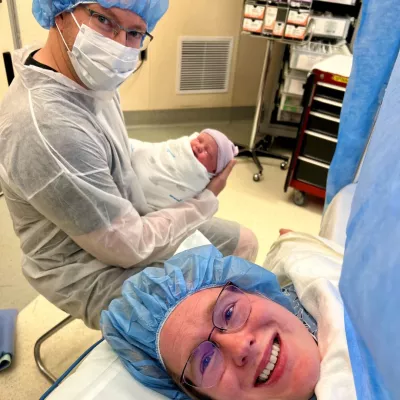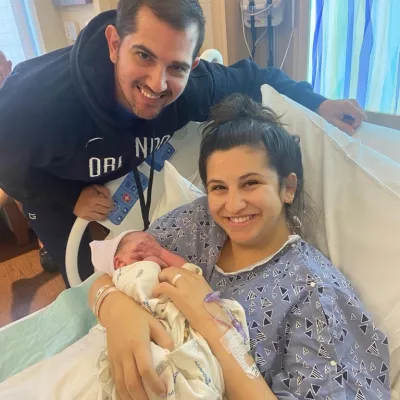- AdventHealth

Choose the health content that’s right for you, and get it delivered right in your inbox.
Considering starting a family can be a very exciting time, but it can also bring many questions — the first being, when and where do I start?
One of the most important things you can do is bring your OB/GYN into the discussion as early as possible to help guide you with a personalized (and healthy) family plan.
“For any reproductive age woman who has the potential to get pregnant, any time is the perfect time to talk to her OB/GYN, especially if she plans to get pregnant,” says Subhia Rehman, MD, AdventHealth Medical Group OB/GYN at Celebration.
Dr. Rehman adds, “OB/GYNs have a prime opportunity to improve fetal and maternal outcomes with pre-conception counseling for women before pregnancy.”
From the pre-conception assessment, providers can identify any risk factors that should be addressed prior to pregnancy. Lowering these risk factors could protect the health of both mom and baby.
Some of the risk factors that are important to consider include:
- Activity level and nutrition
- Chronic and genetic conditions
- Immunization status
- Medications and supplements
- Menstrual cycle regularity
- Obesity
- Smoking and alcohol consumption
- Social and emotional health
When Infertility is a Concern
“Assessing infertility depends on the woman's age,” says Dr. Rehman.
“In women younger than 35 who have regular periods and have not achieved pregnancy after 12 months of trying, we can start looking into what might be affecting their fertility with a workup,” she says. “In women older than 35, six months of trying is plenty of time to start an assessment if they haven’t achieved pregnancy.”
A fertility assessment includes understanding if a woman is ovulating if she has a normal cycle every 25 to 35 days, and if she is aware of the timing of her cycle as it relates to increasing the odds of conceiving.
“Each month, a woman under age 35 with a normal cycle has only a 20% chance of getting pregnant, so we can help women increase these odds by advising them on how to time their cycles the right way,” advises Dr. Rehman.
Treatments for Infertility
“The good news is that we have a lot of successful treatments for infertility, including medications and other procedures to treat common causes of infertility like endometriosis or fibroids,” Dr. Rehman notes.
As far as Polycystic Ovary Syndrome, women can often benefit from hormone treatments that can regularize periods and lifestyle changes. Dr. Rehman explains that even losing 5% body weight can increase a woman’s chances of getting pregnant.
In women with endometriosis, we have different management options, including medical and surgical recommendations. Sometimes these women are referred to the care of a specialist such as a reproductive endocrinologist, who may have more insight into infertility from endometriosis and can offer other treatments that may include in-vitro fertilization (IVF).
“There are also medications that may improve the chances of getting pregnant by increasing ovulation, but these medications do have side effects and contraindications, so they are carefully reviewed with each patient,” advises Dr. Rehman.
Whole Health Care from Preconception and Beyond
Helping women achieve whole health through every stage of life is our focus — from the very start of family planning through pregnancy and every step thereafter. Contact our women’s health navigator today for personalized guidance and support along your health journey, or give us a call at Call407-720-5191.



